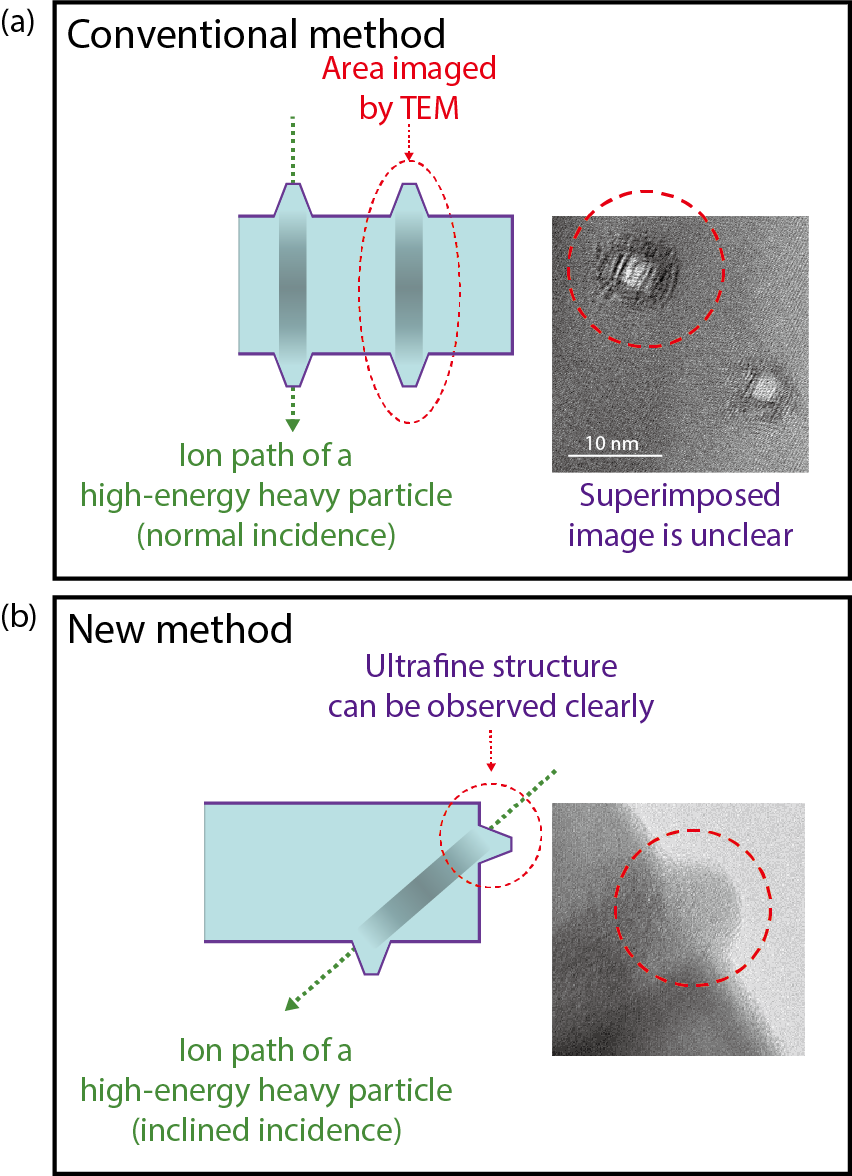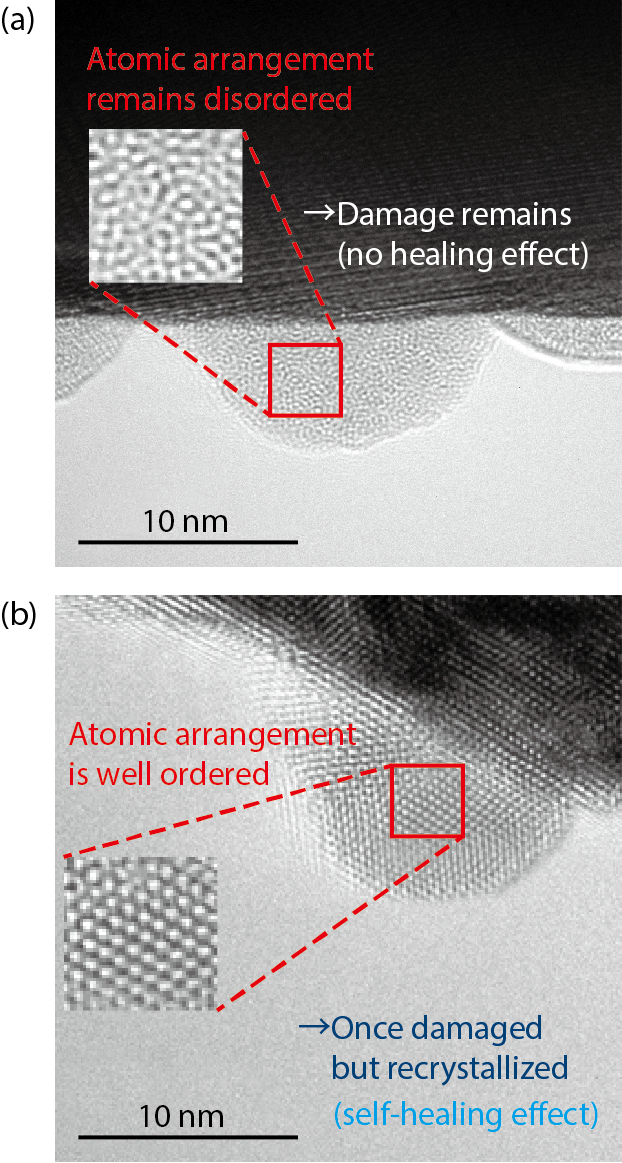
Fig.4-4 (a) Conventional method and (b) new method

Fig.4-5 TEM images of ultrafine structure
Generally speaking, marked radiation damage is created when ceramics are irradiated by high-energy heavy particles. However, for particular ceramics such as barium fluoride (BaF2) and uranium oxide (UO2), irradiation creates less damage than expected. It is important to clarify the reason for the radiation-resistance of these ceramics.
When ceramics are irradiated with high-energy heavy-particle beams, nanometer-sized ultrafine structures are created at the surface. We speculated that the secret of radiation-resistance is hidden in this ultrafine structure, and have started to develop a new method for observing the details of the structure.
Fig.4-4 compares a conventional method of observation and a newly developed method. The nanometer-sized protrusion represents the ultrafine structure. As long as the conventional method is used, images of ultrafine protrusions and other structures are always superimposed, as shown in Fig.4-4(a), resulting in unclear images of the structure.
By irradiating at oblique incidence, we found that ultrafine protrusions were also created at the edge of the sample. As demonstrated in Fig.4-4(b), by improving the irradiation condition and using the transmission electron microscope (TEM), we found that high-resolution images of the ultrafine structure can be observed clearly.
Using the new observation method, the atomic arrangement inside the ultrafine structures of many ceramics (e.g., yttrium iron garnet (Y3Fe5O12)) was found to be disordered after irradiation (Fig.4-5(a)). Conversely, when radiation-resistant ceramics (e.g., BaF2 and calcium fluoride (CaF2)) were irradiated, atomic arrangement was found to be well-ordered (Fig.4-5(b)). This means that the atomic arrangement eventually recovers, although it is temporarily disordered just after irradiation. This result suggests that radiation-resistant ceramics are likely to have a self-healing capability.
This work was supported by the Japan Society for the Promotion of Science (JSPS) KAKENHI Grant-in-Aid for Scientific Research (C) (No.16K06963).